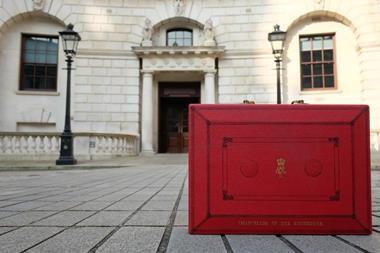Property management expert Sarah Fox, of Hammerson, gives her views on the shopping centre landlord’s methods of increasing business in an ever diversifying multi-channel world when it comes to purchasing goods.
Much has changed in the world of retail during the past 10 to 15 years. Shopping centres have evolved and mega centres such as the Bullring, Meadowhall, the Metro centre, the Trafford Centre, Bluewater and London’s Westfield schemes have emerged, all jostling to take centre stage as they seek to define and differentiate themselves from the competition. But it is the change in how we choose to eat out, combined with the move towards multi-channel shopping that has been an important factor in the rise of these shopping centres.
Since their inception, these centres have continued to grow retail space in an attempt to become dominant shopping destinations but importantly, they have all grown the quantum of space dedicated to food and beverage (F&B). While the recession hit retailers hard, the F&B providers, on average, resisted the declining retail sales trends and, in many instances, showed strong resilience to the recession, growing not just like-for-like sales but also growing additional restaurant numbers. As such, restaurants were becoming a more significant part of the offer and a bigger contributor to overall rental income.
The UK retail sector today has seen consumer confidence returning, reporting its strongest rate since the recession of 2008. More broadly, UK GDP annual growth from 2009 to 2013 was down 0.2% while retail sales grew 0.8% and the forecast annual growth for 2014 to 2018, is much more positive at 2.6%, matching an increase in retail sales growth at a similar number.
Early results in 2015 reflect a positive trend in both the retail and F&B sectors. And this is a trend we are seeing across Hammerson’s portfolio of UK shopping centres. Data from Hammerson’s Retail Tracker (HART), which monitors sales activity across the company’s shopping centres using sales data from more than 850 retail units, demonstrates there has been year-on-year growth in the first four months of 2015 with the four weeks to the 11 April showing growth of 5.8%.
Multi-channel shopping
With consumer confidence back, it is important to note the marked shift in shopping behaviour that we’ve seen since the recession. It has changed the way that shoppers and consequently, landlords, think and behave. The use of the internet has been key, playing an important role in facilitating multi-channel shopping, thereby changing the way we shop for goods.
The rise in multi-channel retailing has forced retailers to reconsider how they conceive their physical presence both in shopping centres and on the high street, and how they target their desired customer base; and in turn this has forced landlords to think about how they configure their shopping centres and present their offer to both the retailer and the consumer.
Consumers want quality, they are value-driven, promiscuous and increasingly research-driven, using various forms of technology to carry out their research. Smart phones, iPads, and laptops have augmented the purchasing process of just visiting physical shops.
Statistics clearly demonstrate the trend towards multi-channel shopping. Today, 45% of consumers now use four channels to purchase goods. A decade ago, only 14% of consumers shopped in this way. Also, 10 years ago, the average purchase process took 0.5 days: one or two visits to a shop to view and purchase the product. Nowadays, that same purchase will take 3.4 days. This is broken down in the following manner: browsing the internet takes 0.8 days; research prior to purchase takes 0.9 days and this is then followed by a further 1.7 days to the point of collection or delivery. And more recently according to data from the ONS, during Christmas 2014, total retail sales reached £41.8bn. This represented a +2.5% increase versus 2013 and represents a £36.7bn spend in store sales (up 1.8%) like-for-likes. However, in comparison, online sales at £5.2bn showed a 7.8% increase in like-for-like sales.
The ONS also reported that 15% of consumers used ‘next day’ delivery services compared to 11% in 2013. And 16% of consumers chose to shop with a particular retailer because of the delivery option that retailer offered. Use of ‘click & collect’ has also increased significantly in the past two years, seen by shoppers as a convenient way to pick up internet purchases. Supermarkets, shopping centres and more recently, transport hubs, have become convenient collection venues. As the use of both grows, it only becomes more apparent that the internet has permanently changed our shopping habits.
Desirable portfolio
Now let’s consider the impact these shifts have had. Shopping centre landlords are at risk of missing out on sales that are driven through the internet, smaller units are becoming vacant through the consolidation of retail brands reducing their physical presence and moving towards larger store formats, and we’ve seen smaller brands going into administration often because their financial model cannot compete with the internet and the more competitive rents set by the bigger retailers.
So what does this mean for these players? Large landlords, such as Hammerson, have to change and react accordingly. Today, Hammerson is one of the UK’s leading retail property specialists by market cap that focuses entirely on its retail portfolio of premium retail destination across the UK and France. With the vision to be the best owner-manager and developer of retail property within Europe, Hammerson aims to make its portfolio ‘desirable’ to consumers through the provision of first-class retail and food concepts, delivered in an interesting, high-quality environment while providing convenience and accessibility to all. Consumers want to eat and drink, be entertained, meet their friends and shop in a safe, clean and pleasant environment. Shopping centres have to become destinations where people want to spend time.
Looking at the retailers that have survived, they have had to think about creating an improved and more interactive experience for their shoppers. As such, we are seeing a trend towards retail brands wanting larger shop spaces, which has led to a rebalancing of space within shopping centres. As these retail brands consolidate their offer, space has become vacant and the requirement to fill it has been met by temporary traders and ‘pop-ups’, but in some cases, the space has been permanently filled by F&B concepts eager for a presence in a high footfall shopping destination. So we’ve witnessed a wave of restaurant concepts including coffee shops and new ‘impulse buy’ food kiosks, such as pretzels, bubble tea, shakes and smoothies that are now well placed to bene-fit from the change in the retail landscape. These food operators capitalise on increasing customer demand, increased disposable income, and availability of space, but their biggest advantage is that the consumer cannot get their product via the internet.
The internet’s influence, of course, impacts F&B offers but in a more subtle way. The use of social media can and does sway shoppers’ choices, and food operators ignore it at their peril. Technology has the potential to enhance or detract from the consumer experience. Therefore, as retailers are having to tackle the ‘experience’ proposition to the consumer within their physical environment, so too are the caterers
Floor space for F&B
Clearly F&B has become a clear beneficiary of the shifting retail landscape and is now more than just an afterthought to compliment the retail offer. It is a necessity and an ‘anchor’ in its own right.
This is well demonstrated by the increase in floor space given over to F&B in recent years. Using the Hammerson portfolio as an example, we have seen more than a 20% increase in space to let allocated to restaurants and cafés in the four years since 2010. Total floor space now occupied by F&B operators stands at 600,000sq ft but this
still only represents 8.1% of total floor space available within the centres.
In the same four-year period, base rent received from the restaurant and coffee shop operators has grown at a comparable rate with the increase in space occupied, so that rental income from restaurants and cafés now represents 11.4% of overall base rent.
The graph (below) illustrates these numbers with a significant spike during 2013. This was a direct result of revitalising an old food court with new and refreshed offers in WestQuay shopping centre in Southampton, as well as converting redundant external retail space into a vibrant and bustling square full of new and exciting offers at Highcross in Leicester. St Peter’s Square has now become the Highcross’s dining quarter and the focal point for dining out in the city.
Interestingly, well into their second year, the majority of restaurants, both old and new, in both redeveloped schemes are showing like-for-like growth. Adding more restaurants has helped grow sales income for most of the operators.
Restaurants have traditionally paid significantly less rent than retailers and have tended to take less prominent space within the shopping centres. However, as space becomes less available and there is an ever increasing demand from some of the big restaurant operators for additional space, rents have started to increase in line with demand. Consumers want more choice and, therefore, the number of restaurants has to grow. This demand is not going away and as landlords seek to turn their centres into ‘venues’ appealing to a broad church of consumers, so they must work hard to adapt tenant mix and grow the quantum of offers.
There is a happy balance of supply and demand when increasing the food and beverage offer in a shopping centre. Too many restaurants and restaurateurs are not able to sustain sales and profitability, resulting in a failing scheme for the tenant and the landlord, and certainly for the consumer. Not enough suitable offering to attract the consumer means the long-term result is equally as damaging. The landlord must get the quantum and the mix absolutely right.
No longer are the restaurateurs a poor relation to the retail offer. They are part of the key tenant mix and a key component in a landlord’s approach to managing the challenge posed by multi-channel retailing.
Sarah Fox is head of speciality leasing at property development and management company Hammerson










































